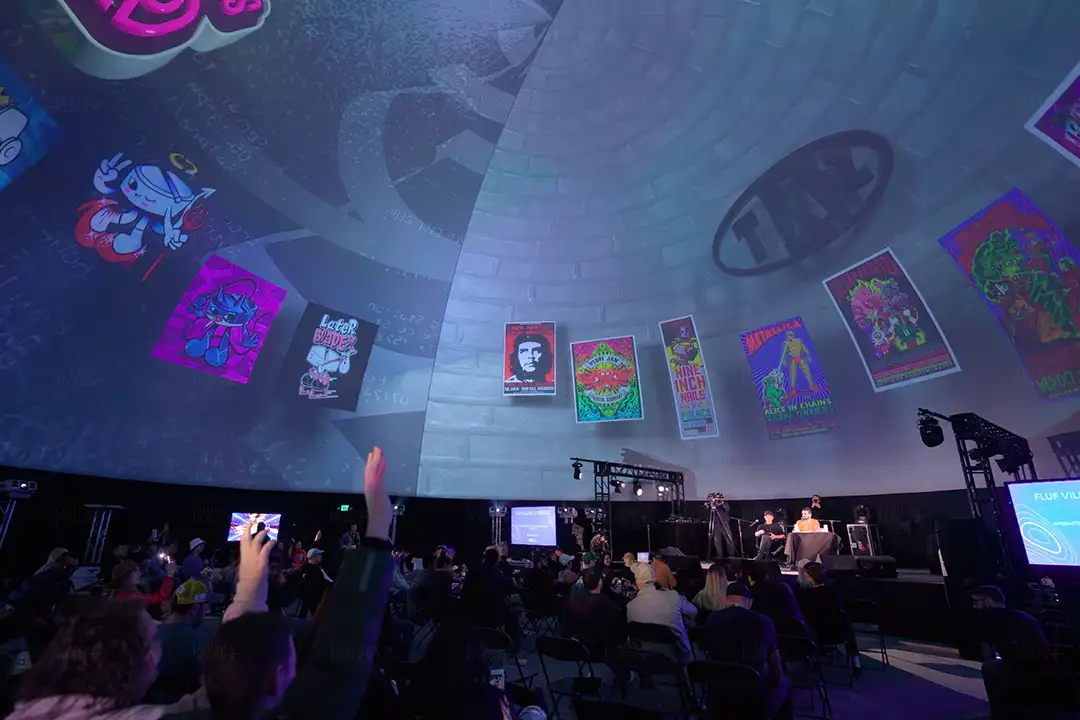FAQ
1. Are there any safety considerations when using 360-degree projection?
Yes, like any technology, there are safety considerations with projection in 360 degrees. These include ensuring proper installation of projectors and screens to prevent falls or accidents and considering viewer comfort to avoid triggering motion sickness with fast-paced or shaky footage. Moreover, it’s important to note that larger and complex systems will have high power requirements and it’s essential to adhere to electrical safety and fire prevention guidelines. Always follow manufacturer guidelines for equipment use and setup.
2. Is there a cost difference between 360-degree projection and traditional projection technologies?
There is typically a cost difference between 360-degree projection and traditional projection technologies. Due to the specialized equipment and software required, spherical projection can be more expensive. However, the immersive and interactive experience it provides often justifies the investment, particularly for events and installations aiming to deliver a unique, high-impact audience experience.
3. How large are the screens used for 360-degree projection?
The size of 360-degree projection screens can vary widely depending on the specific use case. From smaller domes for intimate immersive experiences to massive installations in planetariums or large event spaces, the projection screen size can be tailored to fit the requirements of the project. The key is to ensure a seamless visual field that provides a complete 360-degree experience.
4. What is the highest resolution available for 360-degree projection displays?
Most 360-project displays support resolutions up to 4K or 8K, but there are some that support up to 16K, such as Sony’s 16K-capable Display System. However, it’s crucial to note that the selection of resolution is largely determined by factors like budget and the size of the venue or projection space. Ultimately though, the resolution of your 360-degree projection will depend on the size of your space, the number of projectors required, and the balance of pixels per square inch according to the viewing distance.
5. Are there any types of content that are incompatible with 360-degree projection?
Most types of content can be adapted for use with 360-degree projection, but it’s important to consider that the format involves a completely surrounding visual field. As such, content should be designed to make full use of this space. Regular flat content may not translate well without modification. For the best results, content should ideally be created with 360-degree viewing in mind.
6. How does 360 video projection differ from traditional projection?
Unlike traditional projection, 360 video projection immerses viewers in the content like never before by surrounding them with it. By projecting onto curved screens or entire rooms and carefully positioning projectors at various angles, 360 video projection transforms an ordinary theater space into an environment of exploration and adventure. Instead of merely observing visuals on traditional flat video displays, viewers can now experience new worlds with vivid three-dimensional images that wrap around both the floor and ceiling.
7. How is 360 video projection different from VR headsets?
While VR is ideal for providing a personal experience for viewing 360-degree content, 360 video projection allows an entire audience to experience it at the same time. Even though you lose some level of interactiveness with 360 video projection, it’s much more useful in situations where you want to capture the attention of many without needing them to use a dedicated VR headset.



























